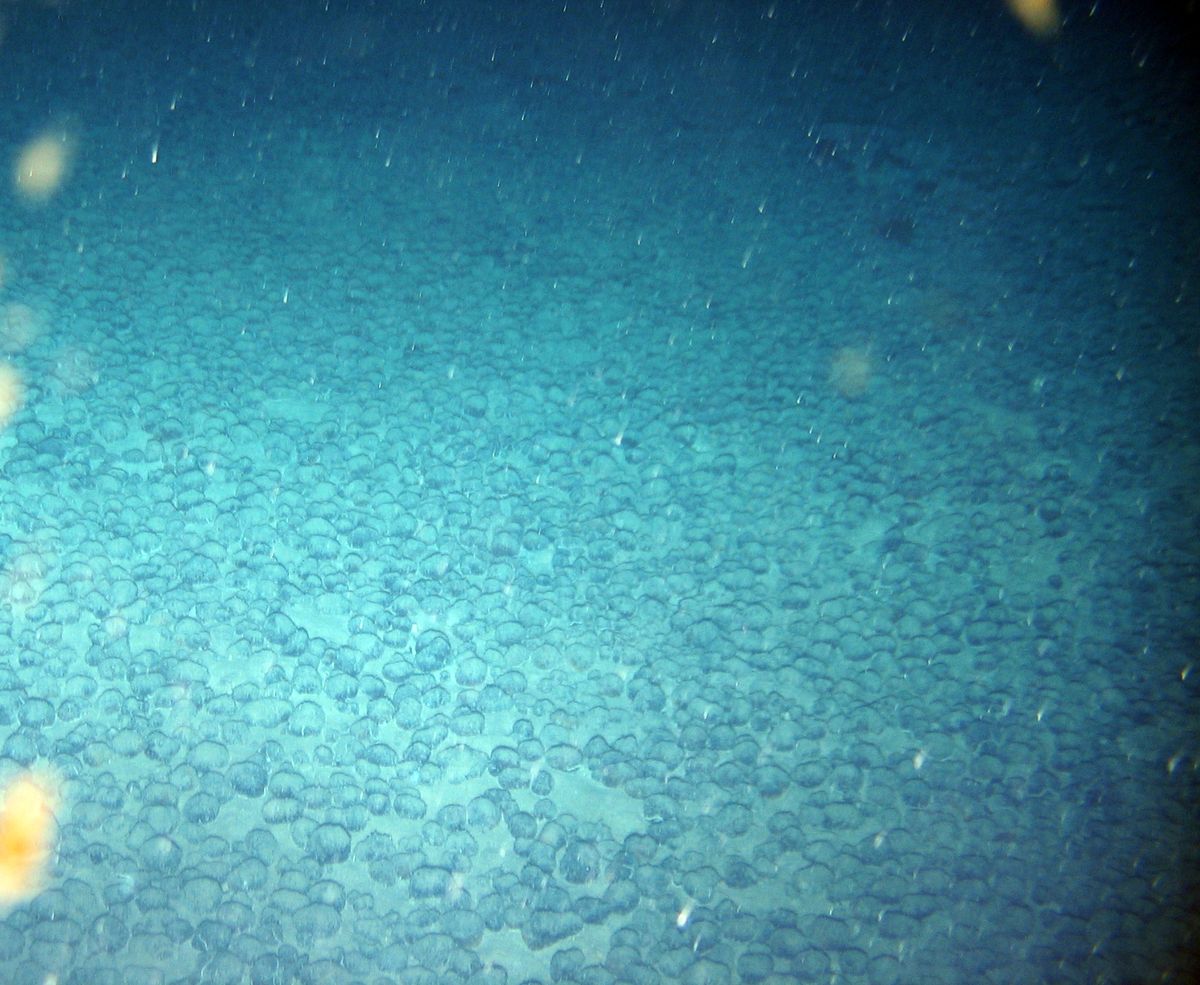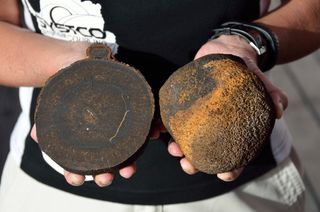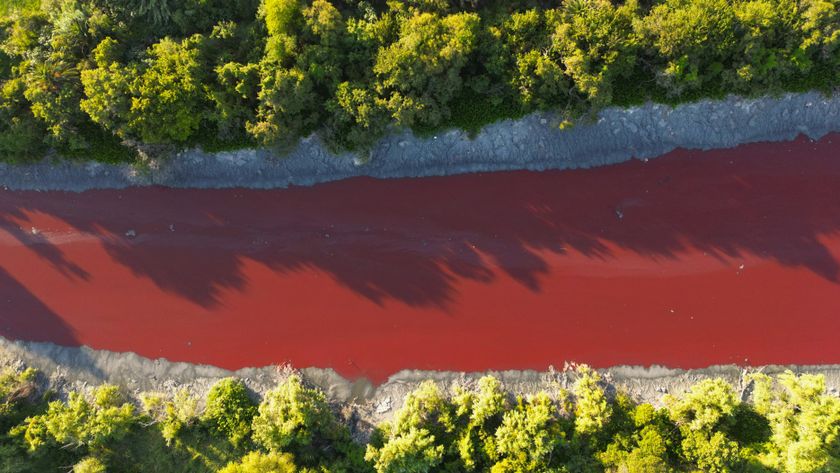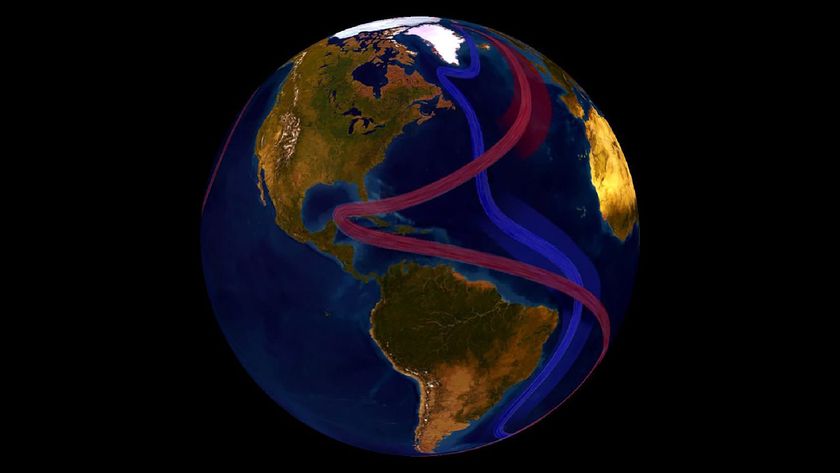Vast Bed of Metal Balls Found in Deep Sea

Scattered along the seafloor, dense clusters of large metal lumps have been discovered by scientists trolling for deep-sea creatures between South America and Africa
The R/V Sonne, a German research ship, was several hundred miles east of Barbados when a mesh net meant to capture marine life instead brought up balls of manganese ore that were bigger than softballs. A remote camera later revealed that the seafloor was littered with these round manganese nodules, some the size of bowling balls. [Photos: The World's Weirdest Geological Formations]
"I was surprised, because this is generally not the place you think of for manganese nodules," said Colin Devey, chief scientist for the expedition and a volcanologist at the GEOMAR Helmholtz Centre for Ocean Research in Kiel, Germany.
This is the largest patch of manganese nodules ever found in the Atlantic, Devey said.

Manganese nodules have been found in every ocean, but are most common in the Pacific Ocean. The metal lumps, which most often look like pancakes, are formed of layer upon layer of metal ore that slowly crystallizes around a core. The core may be a fossil, a rock or fragment of another nodule.
"These were very, very circular, which is strange," Devey said. "They usually look like cow flops."
Scientists think the nodules grow very slowly, padding themselves by less than an inch (1 centimeter) in a million years. The largest nodules found by the R/V Sonne scientists could be as old as 10 million years, Devey said. Because the spheres are so old, they could provide a record of past climate change, he added.
Sign up for the Live Science daily newsletter now
Get the world’s most fascinating discoveries delivered straight to your inbox.
In the 1970s, manganese nodules captured the interest of researchers as a possible source of rare metals such as nickel, copper and cobalt, which are also mixed in with the manganese in the strange seafloor deposits. But interest petered out because of the difficulty in mining the ocean depths and the technological advances in extracting ore on land.
The newly found nodules resided in waters between 16,400 feet and 18,000 feet (5,000 and 5,500 meters) deep.
The origin of manganese nodules also remains a mystery. Popular ideas include chemical reactions in seawater that are boosted by microbes, similar activity at underwater hot springs and the precipitation of excess metal from seawater.
The research ship collected the nodules while partway through a 42-day exploration of the Atlantic seafloor. The cruise set out with a simple goal: discovery. Scientists on board intended to find out what lived in the tropical ocean depths between South America and Africa, and whether the volcanic mountain range snaking between the continents was a barrier to deep-sea life. During the trip, biologists captured creatures living at extreme depths, some of the deepest ever sampled. Geologists investigated the seafloor topography and plate tectonics along the route.
Follow Becky Oskin @beckyoskin. Follow LiveScience @livescience, Facebook & Google+. Originally published on Live Science.

Most Popular




